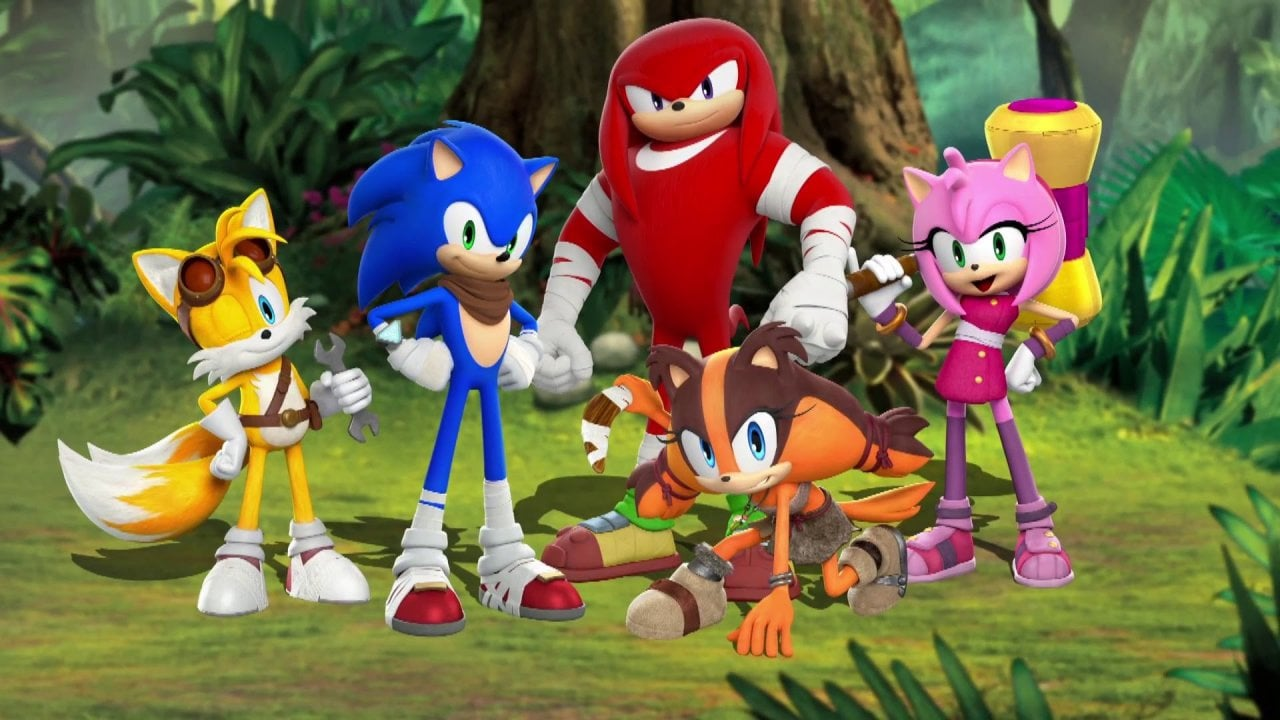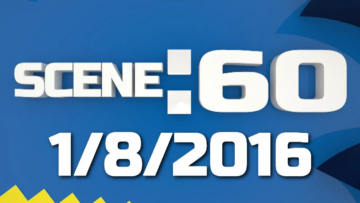
Review – Sonic Dash 2: Sonic Boom
The original Sonic Dash gave SEGA its first bona-fide hit on mobile platforms. After hitting over 140 million downloads across iOS and Android, it makes perfect sense for the company to want to continue that momentum, and they’re doing so in the form of a direct sequel with heavy Sonic Boom integration. Whether you like the Boom motif or not, it’s evident that SEGA’s Hardlight studio really tried to make this a better game than the first one, and for the most part, their efforts have paid off.
SONIC DASH 2: SONIC BOOM
Available on: iOS 7+, Android 4.0.3+
Reviewed on: iPhone 6, Apple Watch, Nexus 9
By and large, Sonic Dash 2 plays very much like its predecessor. You run endlessly on one of three tracks you can switch between freely, and you’re tasking with jumping over obstacles and defeating enemies to make it as far as you can. You primarily collect rings and blue orbs, the latter of which help to fill your Dash meter. Do so, and you can engage a temporary boost of invincibility that lets you blow through anything and everything in your path. Minus the boss fights, much of what you remember about the original Dash returns, for better for worse; the occasional awkward camera angle or confusing cluster of obstacles can prematurely end a run, but the controls remain as simple and responsive as they were the first time around.
So on the surface, it might not look like much has changed, but there’s a pretty substantial amount of improvements and other additions. You can now run into buttons or special item boxes that fling you into the air and let you engage in extended grinding segments or an Enerbeam-rail-riding section that you navigate via tight accelerometer controls. You can choose to temporarily exit a run at pre-defined junctions to bank your rings, or ignore them and keep a big combo alive. Lots of little modifications like these ultimately make the gameplay a little more robust this time around, and with more going on around you, you’re more likely to stay engaged and keep coming back for more.
Outside of the main game itself, there are also side events with lengthier, more ambitious goals that offer much more substantial rewards upon completion, but they’re only available for a certain amount of time. Some of them can’t be completed all at once, but they do track your progress, so you can slowly chip away at them over multiple runs. Access to these events requires you to spend a “ticket”, which works much like the lives system in other free-to-play games in that they slowly regenerate over time. Ordinarily, I’d rage against this system to no end; in this case, though, it only mediates your access to these special events while still allowing you to play the main game as much as you want, so I’ll give it a pass here.
Another big addition comes in the form of Sprites. Sprites are little Wisp-like creatures you can deploy as items during a run as a sort of stat buff or power-up. Some of them can only be used once, and they will grant you extra revives or bank your dropped rings, for example. Other Sprites allow you to deploy them as many times as you want; they give you such upgrades as increased odds of finding an Enerbeam segment, and they can significantly improve your play. You can buy Sprite upgrades with rings you bank at the aforementioned junctions, and it’s nice to have an upgrade mechanic in a free-to-play game tied to in-game currency that you actually accumulate with some degree of regularity. Once a Sprite hits max level, you can “evolve” it by expending additional Sprites in your inventory, and this unlocks an even more powerful upgrade path. You can also bring more than one Sprite into your runs, but unfortunately, you’ll need to fork over some Red Rings to unlock that privilege.
You can now also put a team of characters together and dynamically switch between them at the same junctions where you bank your rings; while this doesn’t drastically change the game, it does give you the opportunity to think about your current objectives and choose the right character for the situation, which helps add to the game’s depth. Characters grow stronger over time as you level them up with rings, and each one has their own special ability; Sonic becomes a ring magnet while dashing, for example, while Tails provides you with a free revive during a run. Knuckles is the most useful by far, though, thanks to his ground-pound-like attack that clears out all enemies ahead of you. When the game prompts you to get a free additional character, pick him and never look back.
Sadly, the game locks all of those additional characters and many of its greatest features away behind that familiar Red Ring-based paywall. It’s pretty stingy about giving those collectibles out, too, so if you want to play as Tails or Sticks or really leverage the game’s additional Sprite and character slots, you’d better crack open your wallet unless you’re really in it for the long haul. This pay-or-play-for-a-very-long-time approach has become fairly commonplace over the years, but just because we’re getting used to it doesn’t make it any less frustrating. The game also occasionally pushes ads and microtransaction offers as well, but these prompts aren’t as relentless as they are in Runners or what’s become of the original Dash.
Surprisingly, Dash 2 also features a companion app on the Apple Watch, and it’s one of the game’s most interesting features. If you choose to let it, the game can hook into your health data and track your steps. The Watch app will record when you run or otherwise get active throughout the day, and this lets you work toward goals that unlock more content in the game itself. The rewards aren’t mind-blowing, and they certainly don’t break the game in any way, but it still amounts to more goodies in your inventory than you would have had otherwise. This is one of the more creative uses of the Watch that I’ve seen so far, and encouraging you to run in order to further your progress in a Sonic game almost makes too much sense.
Dash 2 also benefits from presentation and performance that’s several steps ahead of its predecessor as well as other big mobile efforts like Sonic Runners. The whole game looks more detailed and somehow feels more energetic than the original, with the Boom branding working better than you may expect. Menus are clean, responsive, and easy to navigate. Load times are short. Aside from the rare audio hiccup, there’s a general sense of polish throughout; it all comes together to make the game more cohesive, enjoyable, and premium-feeling, if that makes any sense. The catchy music skews a bit generic at times, but familiar sound effects and fitting voice samples result in a solid, if unspectacular, audio experience. All aspects of the game also ran very smoothly on both my iPhone 6 and my Nexus 9, which is always a plus.
There’s a little more to say on that front, though. As is often the case with mobile games, your mileage may – and likely will – vary in terms of performance, especially if you’re on a device that’s showing any signs of aging. I will say, though, that despite the iOS version looking a touch prettier, I actually encountered fewer bugs in the Android version. In addition, the Android version of the game is explicitly designed for phones, so although the interface will appear a bit oversized on larger devices like tablets, by no means does it look bad.
With all of that said, let’s cut to the chase – I really like this game. It’s deeper and more polished than the original Dash, and like it’s older brother, it allows you play and explore at your own pace more than many other free games would. The nature of the free-to-play app economy rears its ugly head at times, but it doesn’t lessen the experience so much as it throttles it back a bit. As it stands, Sonic Dash 2: Sonic Boom is a well-made game that’s one of SEGA’s better mobile outings, and if your device is up to the task of running it, I’d say it’s worth a look.






![[ID: -KIyXwxcIeE] Youtube Automatic](https://lastminutecontinue.com/wp-content/uploads/2024/04/id-kiyxwxciee-youtube-automatic-360x203.jpg)